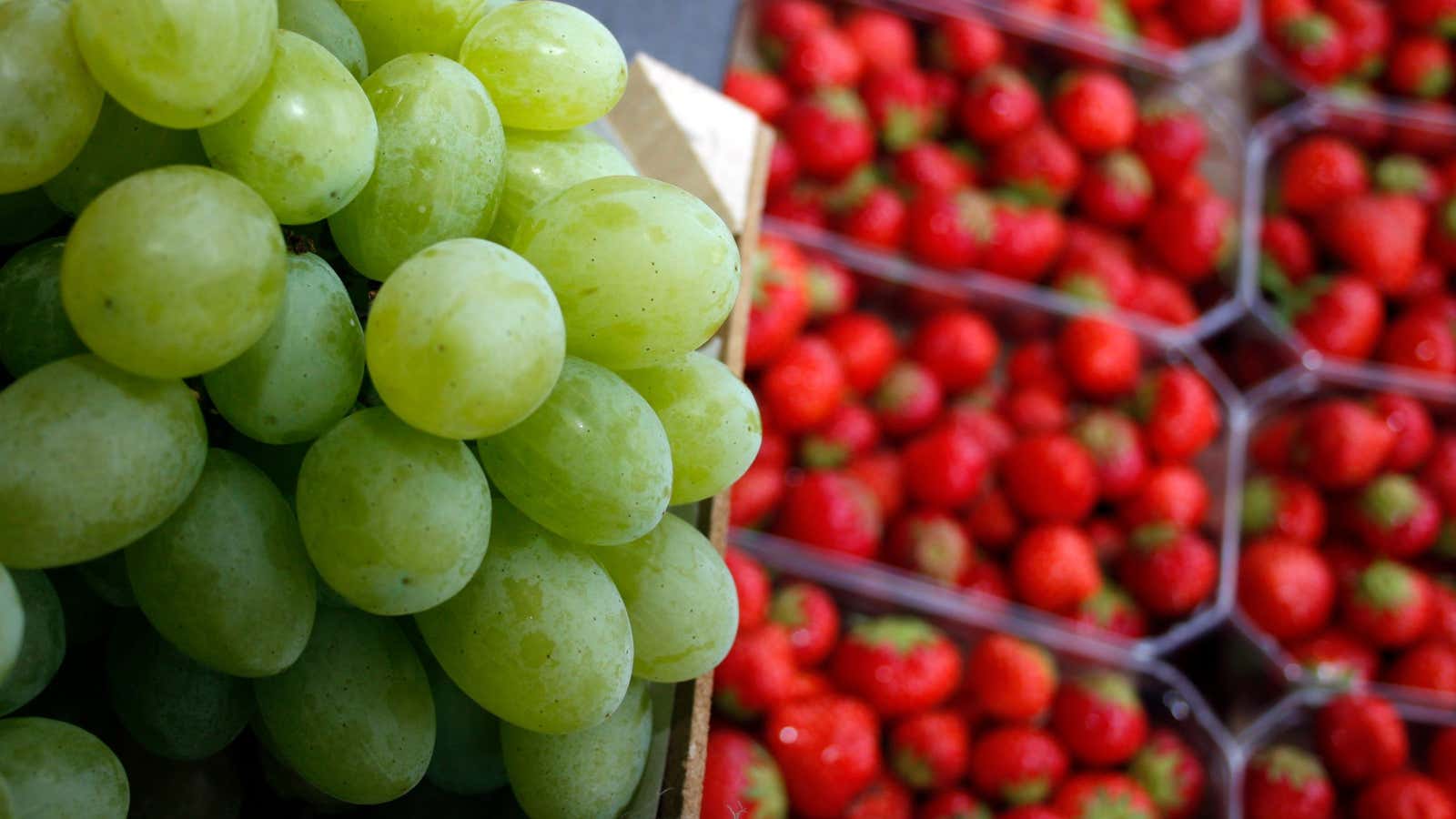Lately, the world of snacks has been a battleground.
Once seen as a friendly gesture at work, breakroom treats like birthday cake and banana bread are now considered uncouth, and some offices have taken to sugar-shaming sweet-toothed employees. Children at some schools have been banned from bringing snacks to protect students with allergies, to reduce sugar consumption, and to keep classrooms clean. Even freewheeling, Kind-bar loving start-ups are reconsidering whether free snacks should be a standard perk. Meanwhile, startups that deliver customized high-end snack boxes, such as Naturebox and Bokksu, have built a dedicated following of snackers.
But despite all these strong views pro and against snacking, no one can quite agree on what actually constitutes a snack. No official guidelines to define a snack exist, whether you’re talking time of day, categories of food consumed, or number of calories. Are high tea, fika, or elevenses snacks or meals? Does it even matter?
A number of studies, including one published by researchers from the University of Surrey in 2017, suggests that the nomenclature matters. The researchers fed 80 volunteers pasta presented either as a snack or as a meal. The snacks were eaten standing up, out of a plastic container, the meals sitting down on ceramic plates. The snackers not only ate more than the diners, they also ate more when subsequently asked to “taste test” traditional snack foods like crackers and candy. “What we have found is that those who are consuming snacks are more likely to over eat as they may not realise or even remember what they have eaten,” Jane Ogden, one of the researchers and a professor in health psychology at the University of Surrey said in Science Daily.
A 2016 review of the existing research from the journal Advances in Nutrition found that snacking patterns, and the effect that snacks have on a healthy diet and weight, are incredibly difficult to track—and that’s precisely because of the slippery definition. It cites a study of American college students that found that the connotations of the terms “snack,” “snack food,” and “snacking” were so variable that “the root word ‘snack’ should be avoided in research questionnaires.”
Despite the clinical confusion around the terminology, the review was definitive about one thing: Snacking—as defined by calories consumed outside of the distinct meals of breakfast, lunch, or dinner—happens. Around the world, chocolate is the single most popular snack, followed closely by fresh fruit, which despite some fad diet-driven concerns about its sugar content, is a nutritionist favorite.
The juxtaposition of chocolate and fruit as the two most favorite snacks around the globe actually offers a useful way to think about snacking healthfully.
If your snack is a treat—like chocolate or a pastry—plan for it and enjoy it, preferably paired with some good conversation. To snack well you have to choose to snack, instead of mindlessly grabbing chips out of the open bag of Doritos on your desk and then realizing in horror that it’s empty.
The Japanese approach to snacking is instructive here: Healthy diet is thought to be a major contributor to Japanese longevity. At the same time, snacks are huge in Japan, where they’ve been elevated into covetable, and often adorable, items, like a bite-sized apple cake, shaped like an apple. They’re small, they’re special, and they’re delightful—and made to be savored, not shoveled.
If what you need is an energy boost—say, to raise flagging energy in the late afternoon, or between a workout and a meal—make it an opportunity to eat some fruits or vegetables, which very few of us get enough of.
Mood, energy levels, and blood sugar are related. There’s a reason that “hangry” was added to the Oxford English Dictionary this year: Irritability is the emotion most closely associated with the hunger, and it comes from ignoring the internal hormonal cues to eat the happen about five hours after a meal. (Hedonic hunger is feeling the need to eat for pleasure alone.) Some people can stick to three meals a day and feel fine; others need some apple slices and peanut butter at 4pm to handle the last few hours before dinner without a meltdown.
Nutritionists agree that snacking is not the enemy, especially when snacks contain fiber, protein, healthy fat (check, check, and check for that apple and peanut butter). And they say planning is key: Otherwise, decision fatigue can make it hard to make a healthy choice when you’re hungry, tired, or both. If you’re packing lunch, throw in an apple and peanut butter, or carrots and celery with herby cream cheese—a safer bet than hoping to make a good choice at a café or vending machine late in the day.
And there’s more to health than choosing the right foods. Snack time can also be an opportunity to relieve stress and connect. A Scandinavian-style coffee break isn’t just about eating a cinnamon roll. It’s also about pausing, reflecting, and building a moment of conviviality into the day.
